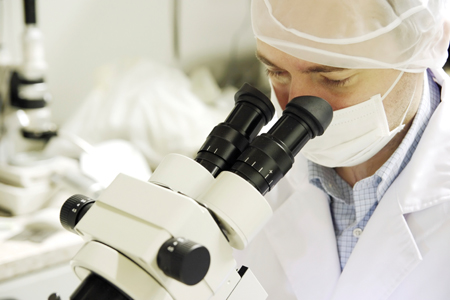A Stepwise Approach to Effective Data Management and Analysis
Not only are comprehensive particle and microbiological environmental monitoring systems essential for ensuring adequate control of manufacturing areas during the filling process, but they also provide the regular and accurate data needed to ensure the microbiological quality of the process and environment. This begs the question: how do companies interpret this amount of continuous data?

For one, it helps to have a data management program. This type of program involves routine review and analysis of environmental and personnel monitoring records, which helps interpret the stability of the process and control performance.
ONE: To develop an effective data management program, one must understand from where the data originates. Environmental monitoring programs collect data from strategic sampling positions in classified manufacturing areas. Samples are also taken from the garments and gloves of operators in aseptic areas during and/or at the conclusion of operations using a combination of monitoring methods—air sampling, settle plates, contact plates or surface swabs—at various frequencies.
TWO: Acceptance criteria (alert and action levels) are then established. When these predetermined alert and action levels are exceeded, investigative and corrective actions must be instigated. Data from routine environmental monitoring is evaluated to ascertain if the area remains under the required control of the designated cleanroom classification.
THREE: Trend analysis (monthly, quarterly or annually) from the data collected by the contamination monitors should be formally reviewed, analyzed and presented at regular meetings. This helps identify long-term trends and determine if the alert and action levels employed continue to be effective.
Review of environmental data management and trends is always a key topic of investigators during regulatory audits. Manufacturers can help ensure a successful audit by understanding their data and demonstrating effective measures used to react to troubling results. Successful contamination monitoring programs should be managed by microbiology units using dedicated data management software or statistical tools.
FOUR: When it comes to risk, this should be evaluated and forecast by a quality group so that preventive actions can be taken. Alarm and action levels need to be set based on the data from the system. Reliable data is paramount for an effective system. When a new system is installed and a new cleanroom implemented, relevant ISO standards are used for the initial alarm and action levels if there is no other data available. Data is collected from operations conducted under a variety of conditions and reviewed and the alarm and action levels adjusted accordingly. This can be done in as few as 30 days; however, it may take 90 days or more depending upon the consistency of the process. There is no specific rule regarding where to set an alarm and action level. Alarms are set after identifying data trends, after which the alerts are set for out-of-trend data.
Graphs, usually generated by the data management system, are an essential tool to quickly and easily identify and understand contamination trends. They are normally presented during regulatory audits to satisfy the quality requirements for analysis. These graphs can also illustrate trending patterns among different monitoring sites.
Environmental monitoring systems not only control the manufacturing area but they also provide a wealth of data. An effective data management program enables this data to be analyzed correctly for the benefit of the company and regulatory auditors.


